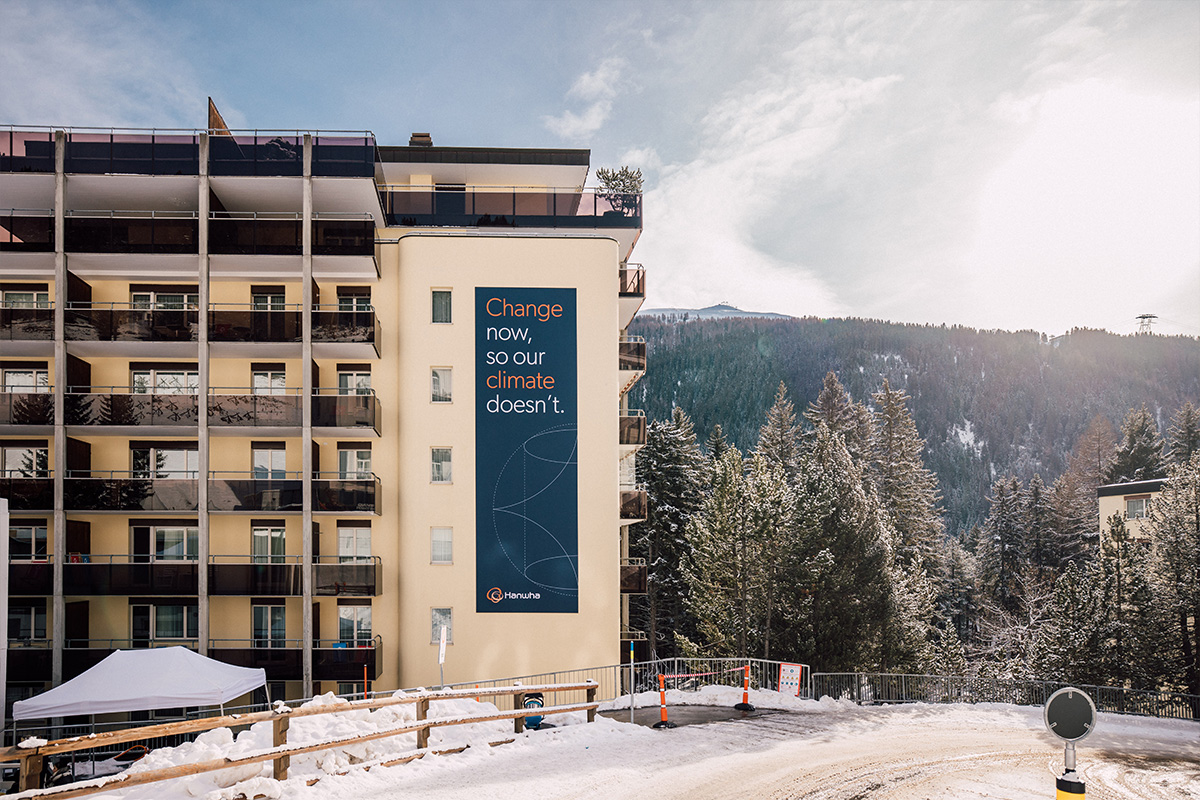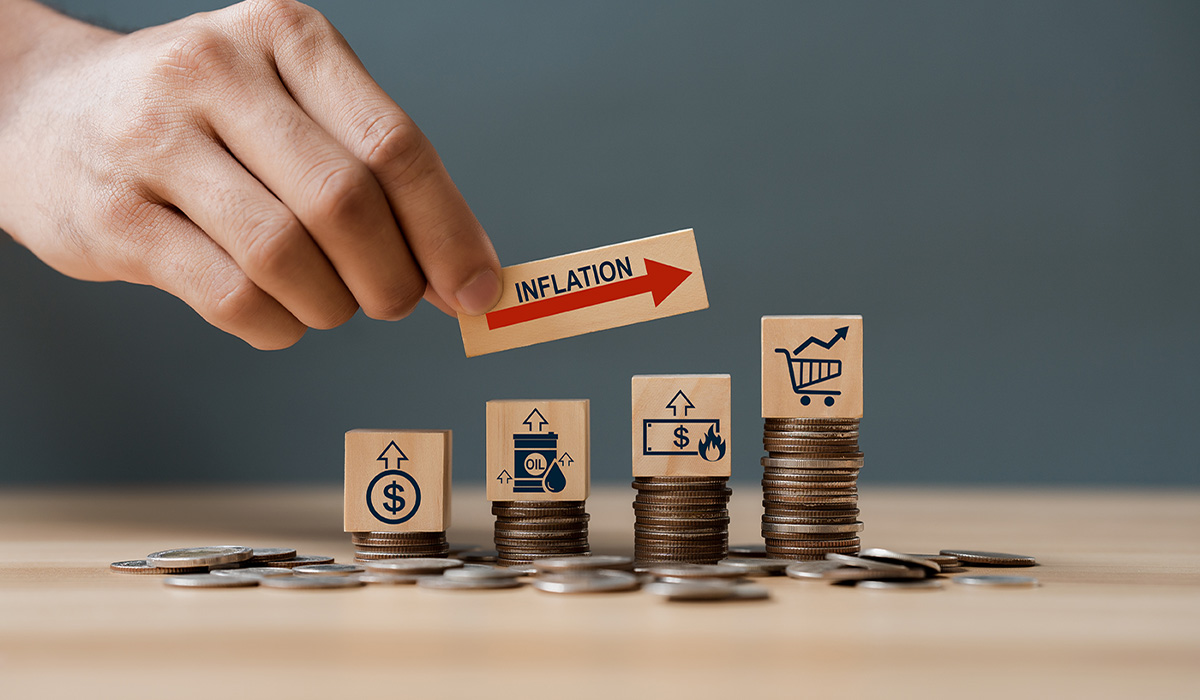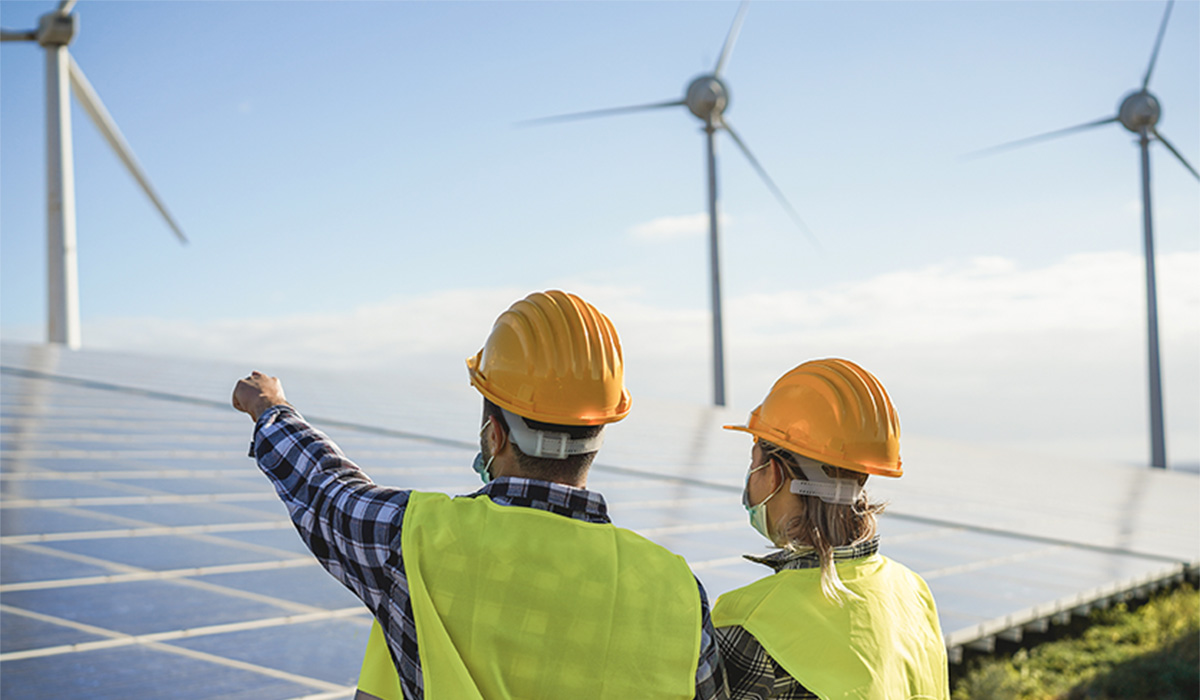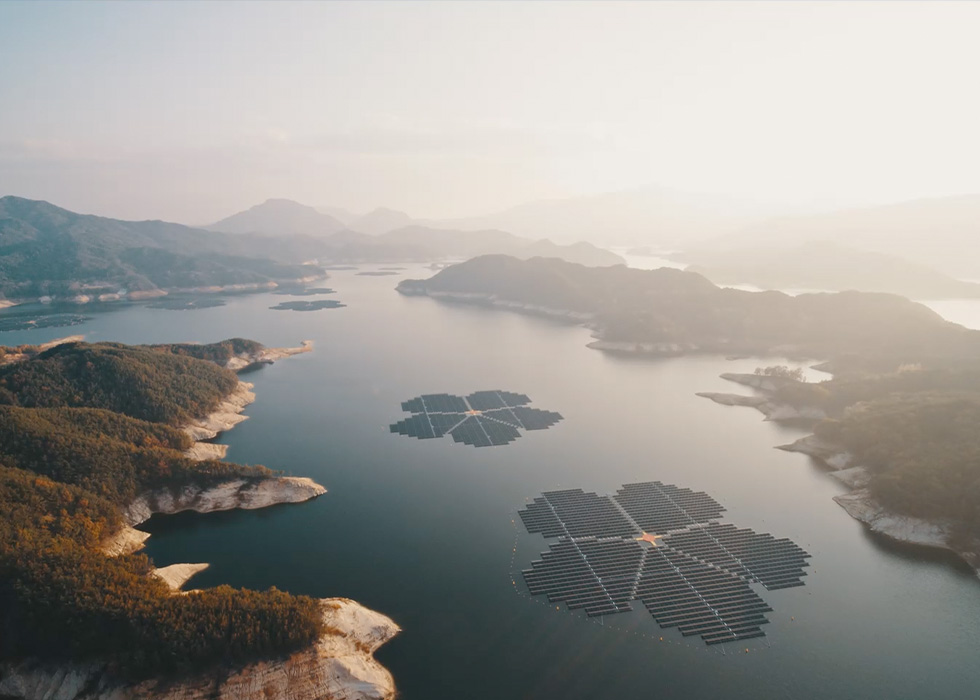Stepping into Sustainability in 2023: Hanwha’s Continued Partnership with Davos

In January, organizations from across the world will gather in Davos, Switzerland to take part in the World Economic Forum’s 53rd Annual Meeting themed “Cooperation in a Fragmented World.” For over five decades, this event has provided a space for leaders of organizations in the private and public sectors, international organizations and academic institutions to engage in dialogue that sets into motion positive, lasting, impactful change aimed at improving the state of our world.
The ongoing COVID-19 pandemic, geopolitical risks, a heightening climate crisis, inflation and more have all contributed to the unprecedented backdrop against which this year’s event is taking place. As such, the World Economic Forum will dedicate its five-point agenda to addressing current challenges and encouraging cooperation across sectors.
Since 2010, Hanwha has actively participated in each Davos Forum, and this year will be no different. As a Strategic Partner with the WEF, Hanwha leverages its decades of R&D and innovation to bring an ecosystem of Earth-friendly solutions and expertise to the collective table. Backed by sustainability and collaboration, here’s how Hanwha’s partnership with the WEF is creating a brighter future for all.

Hanwha's 2023 WEF Davos Office
Five Points for Progress
The WEF strives to demonstrate entrepreneurship while upholding the highest standards of governance. This year’s agenda appropriately reflects this aim but also does not shy away from the harsh realities currently wreaking havoc on our world. The WEF has identified five key areas for discussion at this year’s meeting that place imperative system transformation against the backdrop of meta trends, the Fourth Industrial Revolution, climate change and other challenges.
1. Combatting Food and Energy Crises

Geopolitical conflict, climate change and the pandemic have all created a ripple effect that continues to drive food and energy prices higher. As a result, global food insecurity is at an all-time high with an unprecedented 345 million people lacking secure access to nutrition. Furthermore, current global challenges, lockdowns, labor shortages and bottlenecks have all contributed to a “perfect storm” of logistics woes, including unprecedented rises in shipping costs and delays in freight deliveries. The complexities at play in this supply chain crisis have heavily impacted the cost of goods and caused further disruptions in food and energy security. Accordingly, swift action must be taken to combat these crises and achieve the Paris Agreement’s global energy goals.
Environmental action, energy transition and climate change are all deeply connected, and while a global energy transition is well underway, there is still more that needs to be done to reduce global greenhouse emissions and curb the damaging effects of global warming. Hanwha continues to make bold moves to boost the accessibility of green energy solutions throughout the world through avenues including energy storage systems and solar and hydrogen energy. As part of this strategy, Hanwha Solutions’ Qcells division (Qcells) recently announced plans to expand its U.S.-based solar module operations with a 2.5 billion USD investment that will bring a “Solar Hub” manufacturing complex to Georgia. This new site will boost Qcells’ current 1.7-gigawatt manufacturing capacity up to 8.4 gigawatts ─ enough to power 1.3 million homes in the U.S. for a year, making Qcells the largest solar manufacturer in North America. With production lines capable of turning out 3.3 gigawatts worth of ingots, wafers, cells, and modules each, the Solar Hub will also be North America’s first end-to-end solar value chain.
Hanwha is also making strides in Europe with a host of projects leading the green energy transition. In Germany, Q Energy Europe, Hanwha Solutions’ European subsidiary, has planned a joint project with Frankfurt-based solar power company Enviria to build solar power plants with 500 megawatts of combined capacity. In addition, a third energy-storage system (ESS) project is underway in Ireland. This project aims to provide the country with a consistent supply of renewable energy, combatting soaring energy prices throughout the European energy market. With projects creating green energy and a greener Earth, Hanwha continues to leverage technology and innovation in meeting net-zero climate targets.
Hanwha is tackling food insecurity as well, with several sustainable projects that address core issues from the ground up. In addition to investing in Inari Agriculture, which utilizes next-generation gene editing technologies to create more productive crops, Hanwha has pursued initiatives to promote biodiversity while combatting climate change. Its unique Solar Beehive, a low-carbon photovoltaic beehive powered by solar energy, supports healthy trees, flowers and crop yields by protecting the world’s most important pollinators. From major green energy moves to protecting the Earth’s vital microbiomes, Hanwha is helping to create sustainable solutions for a more prosperous society.
2. Addressing Economic Challenges and Inflation

Chances are, if you have filled up your car with fuel or been to the grocery store lately, you’ve come face-to-face with bloated prices caused by inflation. But what is inflation, anyway? Simply put, inflation is how much the prices of goods and services increase over a given period of time. Conflict, global warming and COVID-19 have all dragged down economic growth worldwide, aggravating inflation and hitting consumers with steep prices. Recovery requires a new vision for economic prosperity, a deeper look at what causes inflation and creative solutions to combat its effects.
Since World War II, fossil fuels have been the primary cause of the largest inflationary shocks across Europe. In September 2022 alone the price of energy soared 40.8% above the previous year, contributing to 36% of overall regional inflation. However, clean energy can help combat inflation by offering an alternative to volatile fuel prices while also providing climate benefits.
The Inflation Reduction Act (IRA) signed into law by President Biden in the U.S. also promises to further propel green energy and related technologies forward with significant renewable energy provisions and incentives. But the successful implementation of this legislation will come down to action from corporations. Hanwha is already hard at work in this sphere, supporting the key IRA goals with clean energy solutions that can aid in the fight against inflation. One such example is the company’s steps towards tackling energy security through cleaning up the solar value chain. Hanwha Solutions is utilizing vertical integration and growing its downstream solar business to create a robust, completely clean value chain that can handle everything from module production to energy supply. Its recent investment in “clean polysilicon” manufacturer REC Silicon has only further strengthened the company’s clean energy value chain, allowing Hanwha to provide eco-friendly raw materials for the global solar market. This move will also have a great impact on the widespread adoption of renewables as it will grant more people with access to inflation-resistant clean energy. From manufacturing to delivery, Hanwha will continue to leverage its growing portfolio of clean energy projects to drive economic growth and strengthen energy security.
3. Cultivating Emerging Technologies Across Sectors

The Fourth Industrial Revolution (4IR) along with climate change and recent geopolitical risks have forced industries to reassess their investment, production and innovation activities. Moving forward, companies will need to embrace and cultivate pioneering technologies in order to build resiliency and remain agile in a fast-paced environment marked by dramatic changes. Successfully navigating this space requires continued invention and a refined focus on 4IR technologies. Hanwha’s diverse business ecosystem has positioned the company to foster synergy across a wide range of industries as it invests in the developments of tomorrow.
The widespread impact of emerging 4IR technologies can be seen through rapid advancements across several digital sectors. But harnessing these technologies is also proving to be highly effective in leading society into a more sustainable future, since they create opportunities to tackle the world’s most pressing environmental challenges in more dynamic ways. Hanwha Aerospace is tapping into these opportunities to fast-track climate-friendly 4IR technologies and usher in a new era of smart climate solutions. Satrec Initiative, a satellite maker of which Hanwha Aerospace is the largest shareholder, plans to use satellite technology to expand sustainable impact in the areas of green energy, climate monitoring and disaster management. Satrec plans to send a high-resolution imaging satellite into low Earth orbit by Q1 2024, a first step towards building a cluster of Earth observation satellites. As the number of extreme weather events and natural disasters caused by global warming continues to increase, these satellites will aid scientists in answering the questions, “What is climate change?” and “How is it impacting Earth?” with more depth and clarity. Earth observation satellites can also help curb the negative aftermath following these weather events and have been named by the United Nation’s Space for the Sustainable Development Goals (Space4SDGs) as a powerful resource in mitigating the climate crisis.
4. Bridging Social Inequalities

Though some markets have started to rebound since the sudden onslaught of COVID-19 in 2020, the global labor market remains in turmoil as workers seek opportunities that provide more fulfillment and higher wages. At the same time, an increase in automation and the rapidly developing technology landscape have created a growing need for employees with specialized skill sets. In fact, 87% of respondents in a recent survey admitted that they are either currently struggling or expect to struggle with skills gap issues in the near future at their current workplace. This skills gap along with upheaval in the labor market have created a temperature in the global job market that calls for bolstered investments in education, skills and healthcare, as well as high-quality jobs that provide workers with the skills they need to succeed in future industries.
Hanwha is working to bridge this gap by creating more opportunities for future workers. The company is heavily backing local communities and emerging industries with its social programs and green energy investments, including the recently announced solar manufacturing complex which is expected to create 2,500 additional jobs in North Georgia. For these communities, the jobs created by green energy have been a major game changer. Not only are these workers playing a critical role in powering the largest solar factory in the Western Hemisphere, but they are also making solar power a tangible community benefit. Here, employees are on the frontlines of the green energy transition, making great contributions to sustainability today by delivering the technological innovations of tomorrow. But green jobs aren’t the only area where Hanwha is making a difference. The company also invests in helping entrepreneurs get their startups off the ground through its DREAMPLUS program, ensuring that new innovations can continue to bolster the market going forward.
5. Cooperation Across Nations

In recent years, the effects of economic and political uncertainty have created a shift in the geopolitical landscape where competition has risen above cooperation. In addition, globalization has made the world smaller, creating an even greater need for a new, stakeholder-based global system that can respond to the dynamics of the 21st century. Now, more than ever, countries and corporations should seek opportunities to work together rather than compete against one another.
Forming alliances across borders is a priority for Hanwha. The company’s emphasis on cooperation spans all corners of the globe as Hanwha partners with international organizations such as the Global Green Growth Institute (GGGI) and Partnering for Green Growth and the Global Goals (P4G). Of course, Hanwha’s support of the WEF further drives concrete progress and serves as an example of how partnerships can be leveraged to support bilateral economic cooperation and beneficial, lasting change across sectors.

Setting Tomorrow in Motion
There is no question that January 16-20, 2023, will serve as five impactful days for Forum participants, their respective organizations, their larger sectors and the global community as a whole. This event has the potential to inspire contagious action and widespread transformation amongst purpose-driven communities and influential leaders. Hanwha does not take this responsibility lightly and welcomes the opportunity to begin this new year guided by sustainability and progress. Accordingly, Hanwha is honored to show its support of the WEF’s ongoing activities.
Deep conviction leads to delivery, and Hanwha takes pride in not only making promises, but following through. Together with the WEF, Hanwha remains dedicated to creating valuable solutions and joining hands with like-minded institutions to promote partnership and prosperity for a thriving planet.
Get the latest news about Hanwha, right in your inbox.
Fields marked with * are mandatory.
- Non-employee
- Employee






